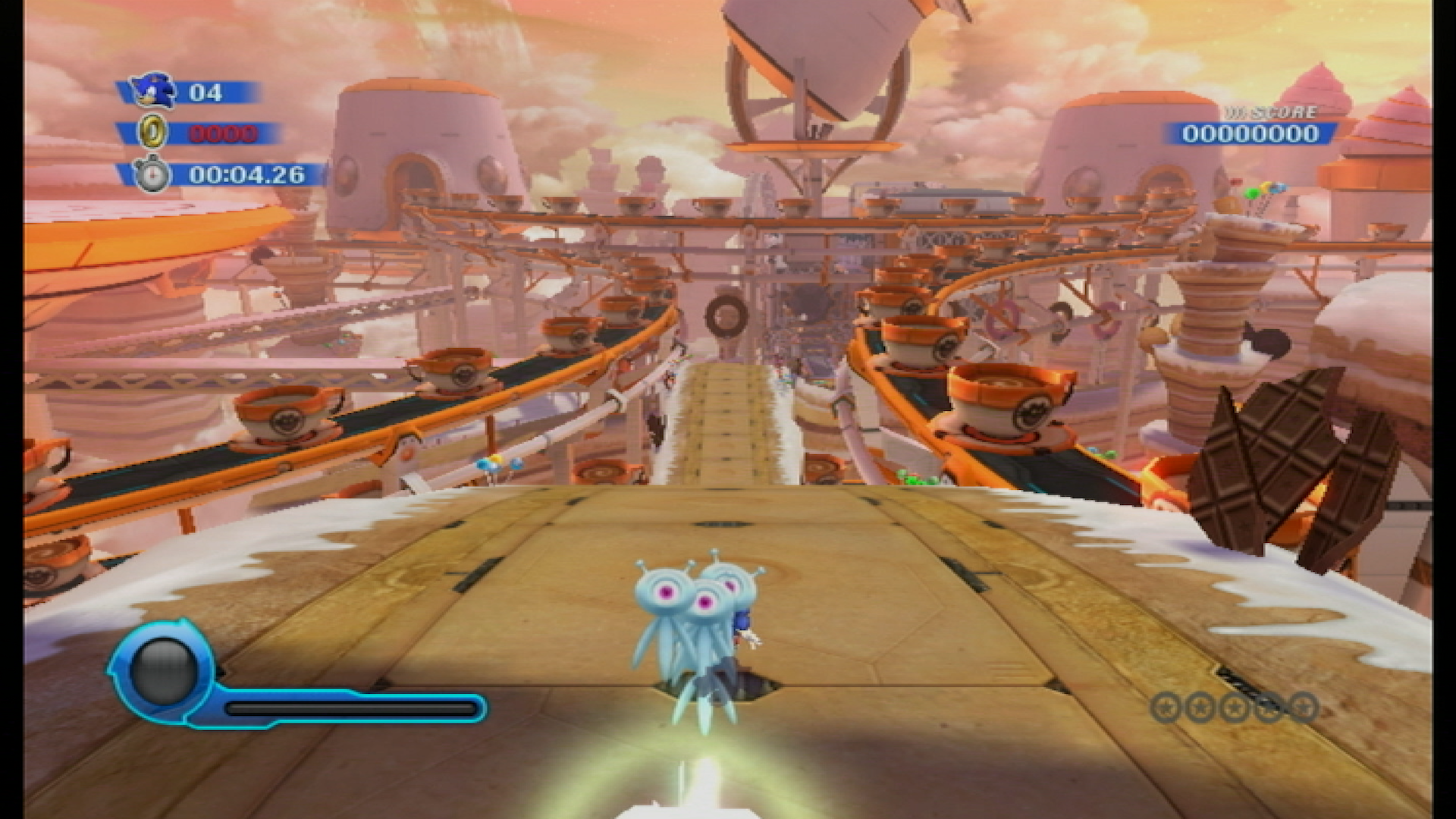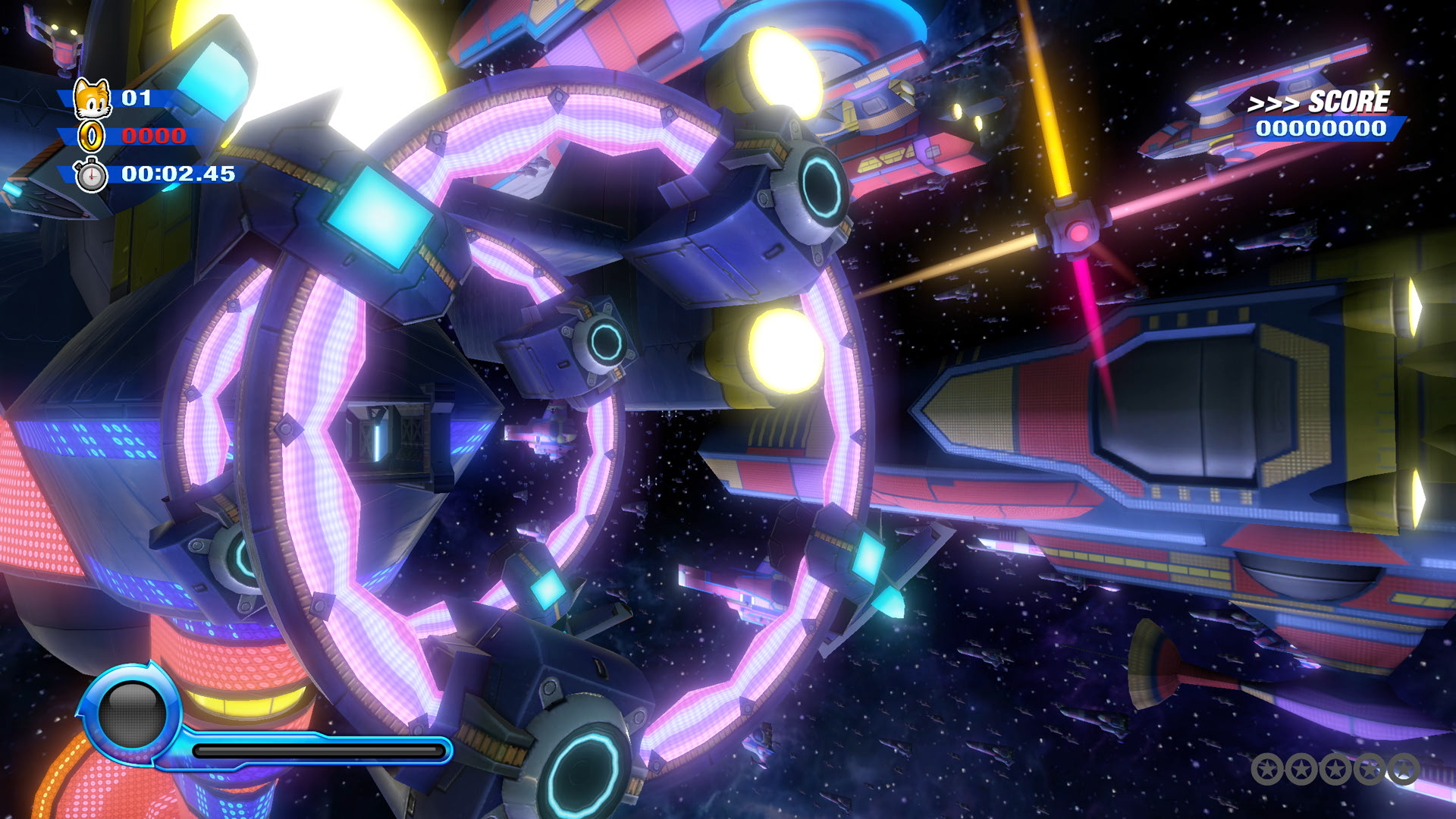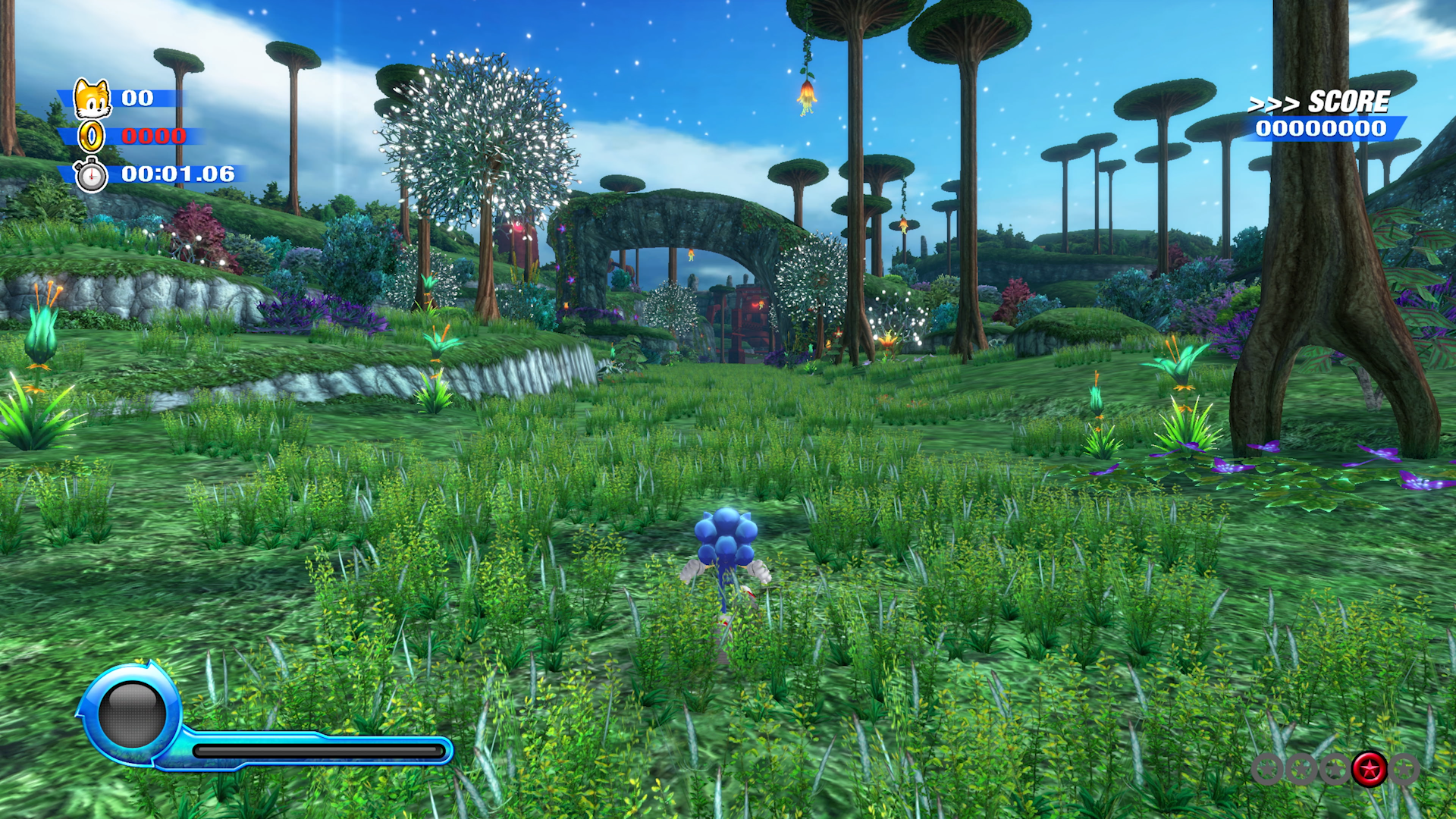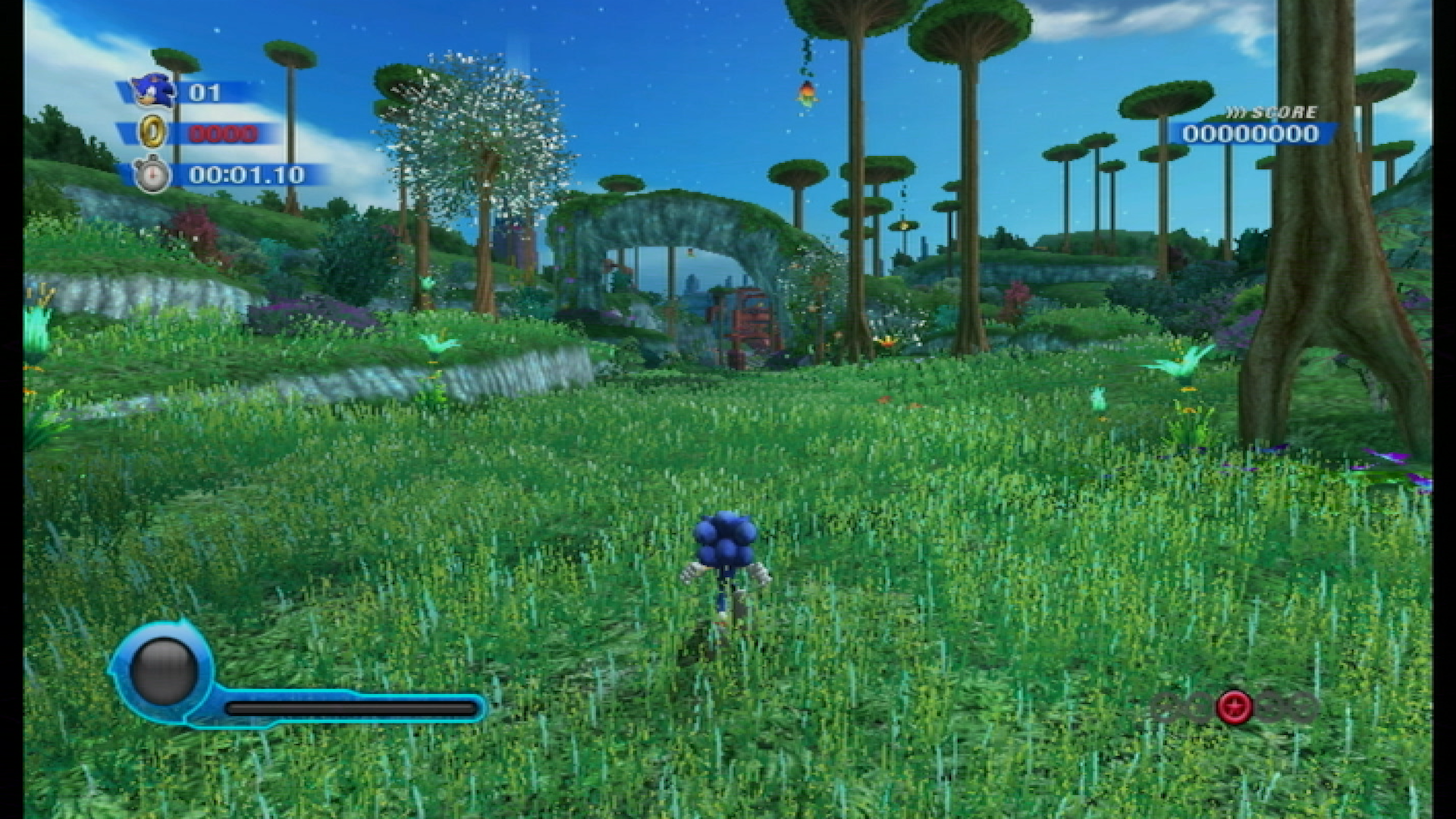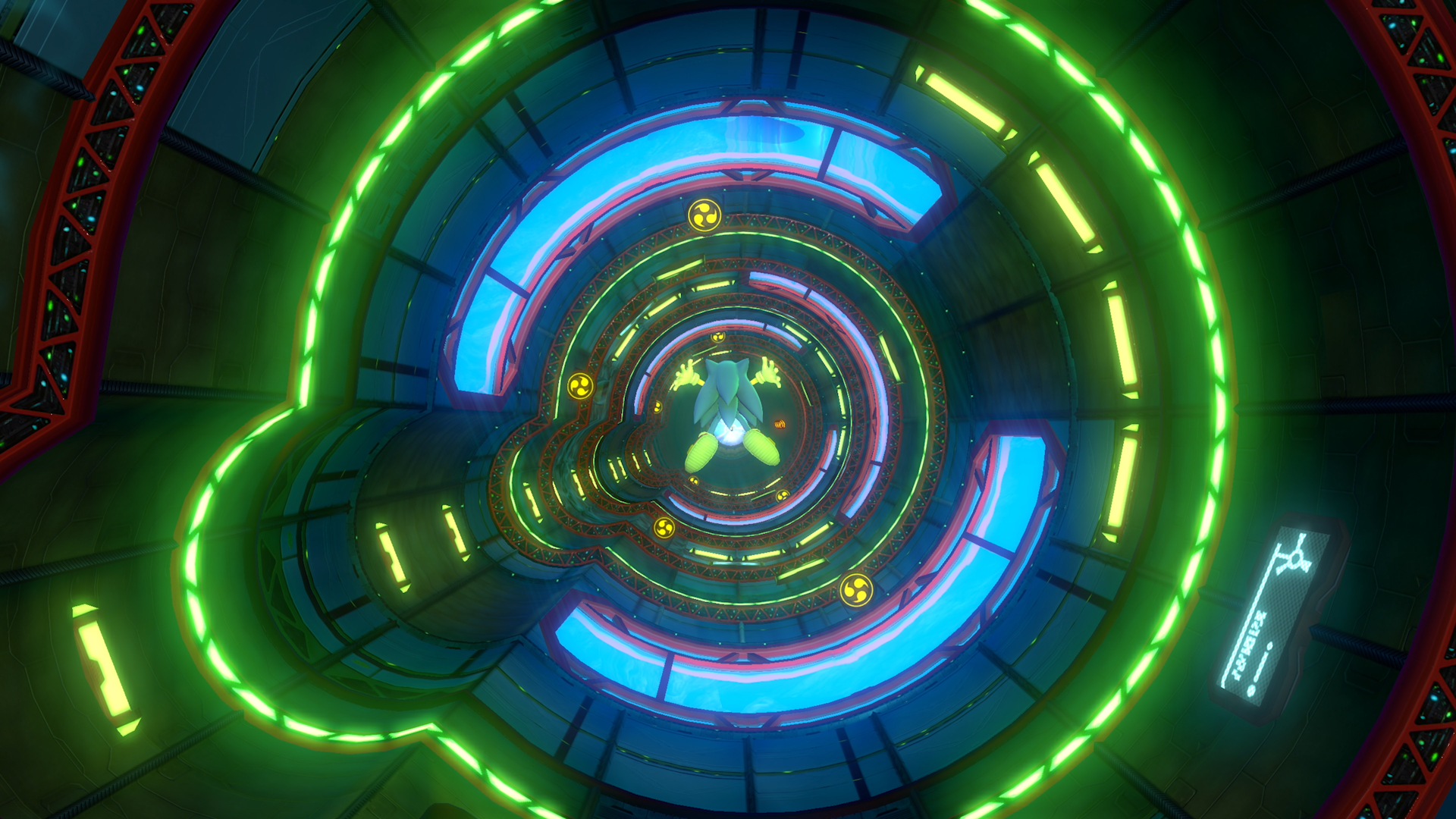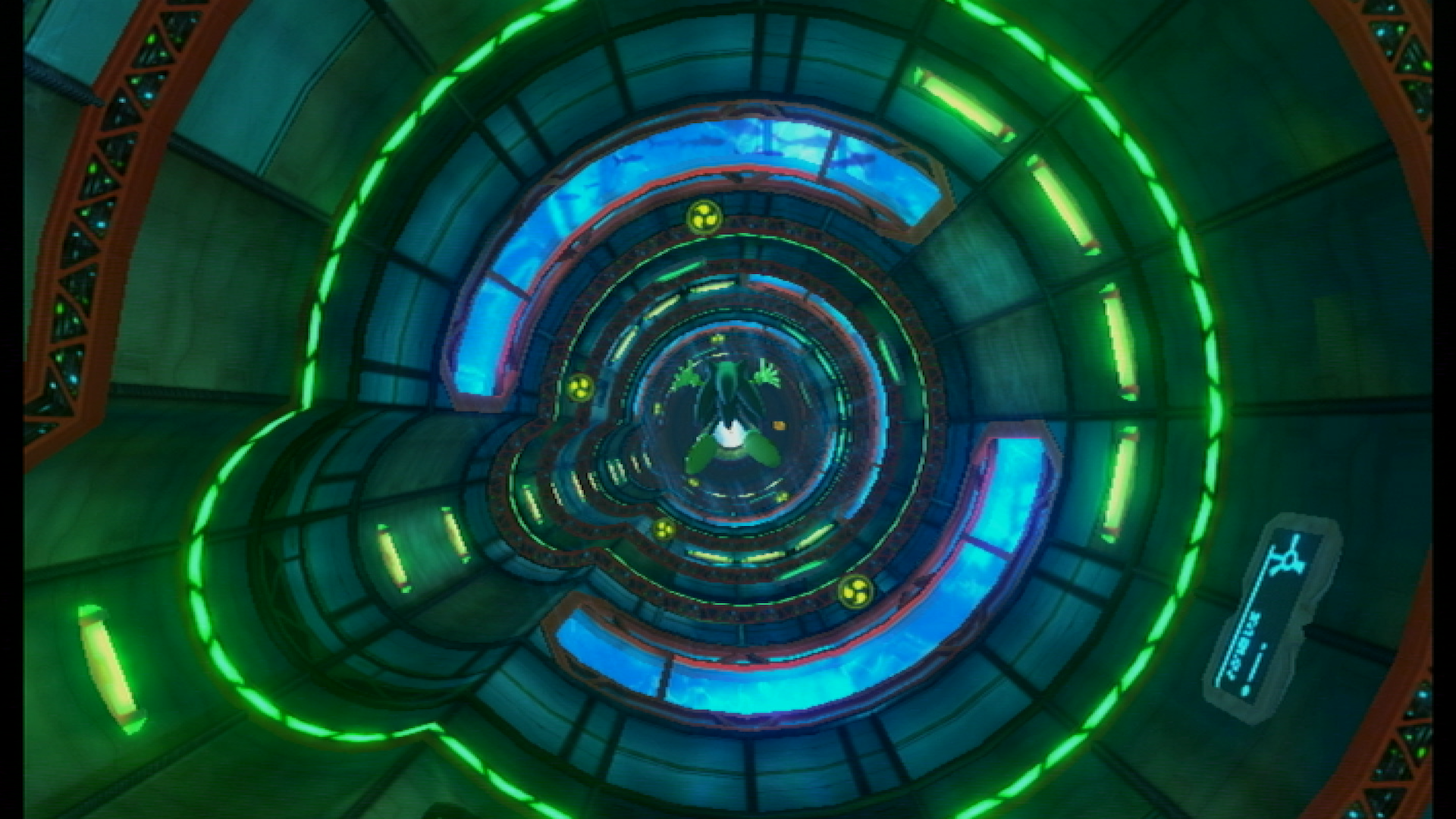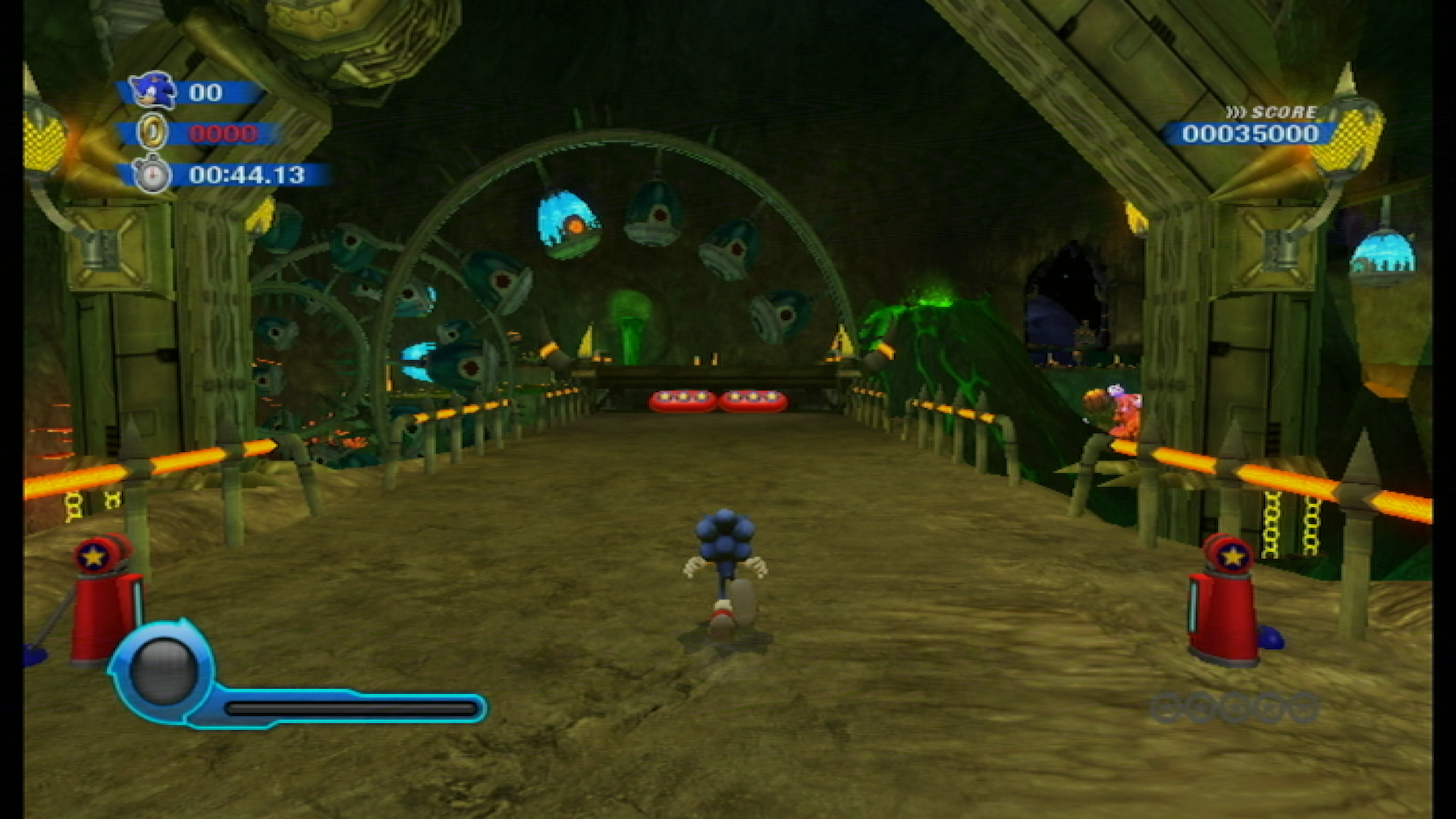Released in November 2010, Sonic Colours builds spectacularly upon the foundation formed by Sonic Unleashed - stages seamlessly transition between full 3D sections and 2D side-scrolling sections as you play. Sonic has a lock-on, a boost button and a slide, among other things. It may seem slightly overwhelming at first blush but once you become accustomed to the controls and level design, it starts to flow beautifully. As you nail boost pads, springboards and bounce off enemies in quick succession, it feels highly satisfying. It’s this rhythm that defines boost Sonic games - it’s different from classic Sonic but you get that same buzz from maintaining a clean run.This is also complemented by a fantastic soundtrack with a wide range of composers contributing to its production. There’s plenty of room for the remaster to improve the experience though: the frame-rate was limited to 30fps and being a Wii game, image quality was limited to 480p - the camera often zooms way out to show off the scenery and on Wii, this makes it difficult to even track Sonic’s location sometimes due to the low resolution. When you fire up the remaster for the first time, you’re presented with a logo trumpeting the use of the Blind Squirrel Engine but what does this mean? Well, according to ‘Skyth’, who did some digging into the game files, it still uses the original C++ code and the Hedgehog Engine but the graphics backend is handled by the Godot Engine. Godot is completely free and open-source under the very permissive MIT license. It’s a strange setup, but what is clear is that Blind Squirrel went back and re-did many assets, with both textures and models are enhanced in noticeable ways. The game looks better overall, I feel, but there are some issues as well. The video covers off all of this in depth, but fundamentally, the graphics improvements are decent: texture quality is boosted, lighting is radically improved, geometry is also richer in some areas. The fact that so many meshes are updated is a direct indicator of the amount of work that went into this production. Clearly it was designed to retain the look, in your memory, of what the original looks like while cleaning up some of the rough edges. Music is also revamped, but whether you enjoy the new tracks all comes down to your appreciation of the original - they still hold up really well. The original’s cutscenes are problematic for the remaster. Only the low resolution originals seem to exist for the developers to use, so it looks like AI upscaling is deployed on those assets to increase resolution for the remaster, with a varying level of success. The main problem here is that the fundamental look of the levels has changed substantially from the Wii original, leading to a disconnect between cutscenes and remastered in-game content. So, how about the quality of each individual version of Sonic Colours Ultimate? At least, in terms of image quality and pixel counts, it’s rather simple. On PS4 Pro and PS5, the game renders at 1440p while the base PS4 is 1080p instead. The game does not natively support PlayStation 5, it should be noted, nor does it actually offer 4K visuals as the pre-release materials suggest. On Xbox, things are improved on the top-end consoles - on Series X and One X, the game does indeed render at native 4K and looks super-sharp. Series X in particular offers the best-looking presentation here as it also applies 16x anisotropic filtering to the visuals. The base Xbox One, however, is 900p, but at least Series S delivers 1080p. Switch, however, is a different story. In docked mode you get 900p while portable is just 600p, but there’s more to Switch than just a lower resolution. The games assets are of lower quality - a little disappointing considering the cut to resolution and frame-rate. It looks fine, I suppose, but not quite what I would have hoped for. Unfortunately, this isn’t where the woes end - we have to mention the bugs but it’s a little tricky. Last week, reports started appearing suggesting that the game had some serious visual issues - especially on Switch. During my play time, I did encounter minor things here and there - flickering, pop-in and grass issues in addition to bugs like this where Sonic would be tossed out of the stage. However, other users saw more egregious issues - the waters muddied owing to emulation footage being shared as representative of the game’s issues. In general, my experience was mostly very positive on PS5 and Series X and I encountered few bugs, but one look at various videos out there suggests that your mileage may vary. Performance-wise, the story here is relatively straightforward. Xbox and PlayStation consoles run the game at 60 frames per second while Switch targets just 30 - but how does it really hold up? PlayStation 5, Xbox Series X and Xbox Series S run the game flawlessly at 60fps. It’s fast and smooth throughout. Honestly, this shouldn’t come as a surprise. However, on PS4 Pro and PS4, I noted minor hitching and skipping as you move through the stage, which can be disconcerting and shouldn’t be there. The story on Xbox is the same: Xbox Series X and Series S both power throughout without any problems with super-fast loading and a perfect frame-rate. However, things are pretty dire on Xbox One X. Throughout, I encountered even more serious stuttering and hitching that really interrupts the flow of the game. I do not feel that this is optimal at all and needs to be corrected, and the same can be said of the vanilla Xbox One. The point is - the new consoles have enough overhead to power through any issues but last-gen machines really shouldn’t be exhibiting such issues to begin with. It definitely needs some work both in terms of loading times, which are weirdly slow, and general fluidity needs addressing. Switch hits the 30fps target but there are hiccups throughout and the loading times are way too long for a game like this - seriously, they’re longer than the Wii version running from an actual optical disc. That’s not really acceptable. Ultimately, the actual remastering efforts are pretty good and the boost to 60fps is welcome but there are a number of technical hiccups, bugs and problems with specific versions that users should be aware of. If you plan to play the game on either new Xbox or a PS5, I can highly recommend it - Sonic Colours is still a lot of fun and it plays even better now - but if you’re using a last-gen machine or, especially, the Switch (which is far and away the least polished version) you might want to wait for an update.



